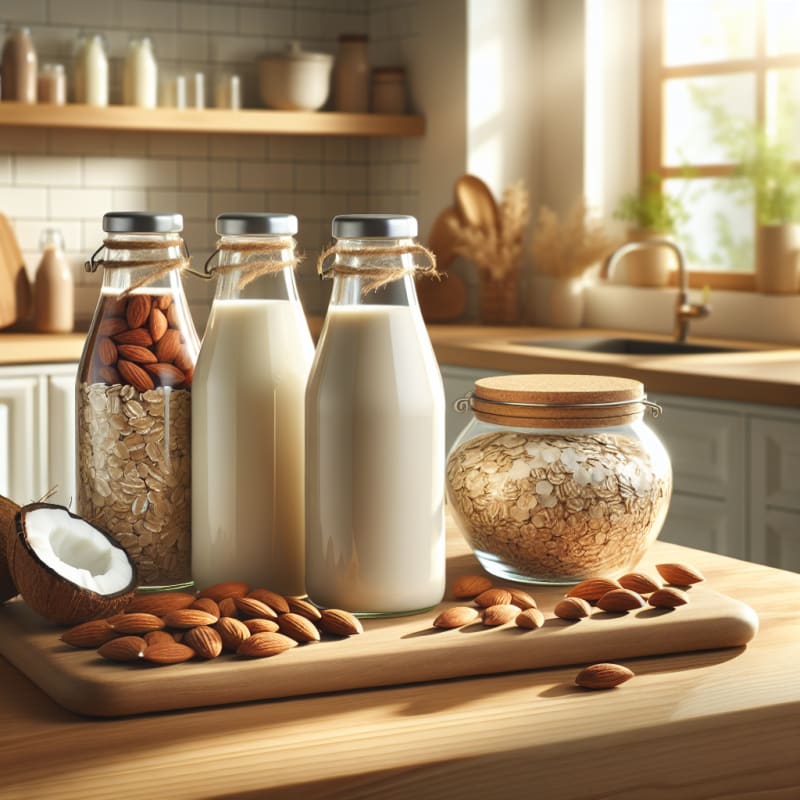The Rise of Lactose-Free and Dairy-Free Milk: Trends, Health Impacts, and Market Growth in 2025
Lactose-free milk and dairy-free milk have become major players in the global food industry. As more people experience milk sensitivity and lactose intolerance, consumers are turning to innovative alternatives that offer both taste and nutrition without digestive discomfort. In 2025, the shift toward dairy alternatives is not just a dietary trend — it’s a cultural and health movement reshaping how people consume milk worldwide.
Understanding Lactose Intolerance and Milk Sensitivity
According to recent data, up to 65% of adults globally experience some degree of lactose intolerance, making traditional dairy difficult to digest. Lactose intolerance occurs when the body lacks sufficient lactase enzyme to break down lactose, the natural sugar found in milk. Symptoms include bloating, gas, cramps, and diarrhea after consuming dairy products.
Scientific insights from the Coherent Market Insights lactose intolerance report highlight that the global lactose intolerance market continues to expand as awareness grows and consumers seek better dietary solutions. This rise in demand has fueled innovation across both lactose-free and dairy-free categories.
Lactose-Free Milk vs. Dairy-Free Milk: What’s the Difference?
| Feature | Lactose-Free Milk | Dairy-Free Milk |
|---|---|---|
| Base Ingredient | Real cow’s milk with lactase enzyme added | Plant-based (almond, oat, soy, coconut, etc.) |
| Lactose Content | None (enzyme breaks down lactose) | None (no dairy ingredients) |
| Protein Source | Dairy protein (casein, whey) | Plant protein (varies by source) |
| Best For | Lactose-intolerant individuals who still enjoy dairy taste | Vegans, those with dairy allergies, or ethical consumers |
Market Growth and Consumer Trends in 2025
The global market for lactose-free and dairy-free milk is witnessing unprecedented growth. According to The Bullvine’s 2025 dairy trends report, lactose-free milk products among seniors increased by 25% in the past year. This demographic shift reflects growing awareness of digestive health and the importance of maintaining calcium intake without discomfort.
Meanwhile, the GlobeNewswire Plant-Based Milk Trends Report projects that the global dairy alternatives market will reach $25 billion by 2032, driven by both established brands and startups introducing oat, almond, and coconut innovations. Oat milk continues to dominate due to its creamy texture and sustainability profile.
Supporting this, Renub Research confirms that the dairy alternatives market is growing at a CAGR of over 11% through 2033. This surge is fueled by consumer interest in plant-based nutrition, environmental concerns, and the rise of flexitarian diets.
Health Benefits of Lactose-Free Milk
- Gentle on digestion: The lactase enzyme breaks down lactose into easily digestible sugars.
- Rich in nutrients: Provides calcium, vitamin D, and protein similar to regular milk.
- Ideal for seniors: Helps maintain bone health without causing bloating or discomfort.
- Versatile use: Works well in cooking, baking, and coffee just like traditional milk.
Health Benefits of Dairy-Free Milk
- Lower in calories and fat: Ideal for weight management and heart health.
- Free from cholesterol: Plant-based milks contain no animal fats.
- Allergen-friendly options: Suitable for those with dairy or casein allergies.
- Ethical and sustainable: Reduced carbon footprint compared to dairy production.
Top Dairy-Free Milk Brands to Watch in 2025
Based on current market data and innovation trends, these brands are leading the dairy-free revolution:
- Oatly – Known for its oat-based products and sustainability focus.
- Alpro – Offers soy, almond, and coconut varieties with added vitamins.
- Califia Farms – Popular for barista blends and plant-based creamers.
- Ripple Foods – Uses pea protein for high-protein, low-sugar milk.
- Silk – A household name in almond and soy milk innovation.
Choosing the Best Lactose-Free Milk for Seniors
For older adults, lactose-free milk offers a simple way to maintain calcium intake without digestive distress. When choosing the best lactose-free milk for seniors, look for:
- Added calcium and vitamin D for bone health
- Low sugar content
- Fortified options with B vitamins
- Brands that use natural lactase enzymes rather than artificial additives
How Food Scan Genius Helps Consumers Understand Milk Ingredients
With so many milk options on the shelves, ingredient transparency matters more than ever. The Food Scan Genius app (scangeni.us) helps users instantly scan product labels to identify hidden lactose, dairy derivatives, and potential allergens. Whether you’re lactose-intolerant or simply exploring plant-based choices, the app simplifies decision-making.
“I started using Food Scan Genius after struggling to find lactose-free options that fit my diet. Now I can scan any milk product and know exactly what’s inside — it’s a game changer for my health.” — Maria L., Food Scan Genius user
Why Ingredient Transparency Matters
Mislabeling and unclear ingredient lists remain major issues in the food industry. Consumers often confuse “lactose-free” with “dairy-free,” leading to unintended consumption of milk proteins. Regulatory bodies are tightening labeling standards, but technology like Food Scan Genius bridges the gap by empowering shoppers with instant information.
FAQs About Lactose-Free and Dairy-Free Milk
1. What is the main difference between lactose-free and dairy-free milk?
Lactose-free milk is real dairy treated with lactase enzyme to remove lactose, while dairy-free milk is made entirely from plants like oats, almonds, or soy.
2. Is lactose-free milk suitable for vegans?
No. Lactose-free milk still comes from cows, so it’s not vegan. Vegans should choose dairy-free or plant-based alternatives.
3. Which milk is best for lactose-intolerant seniors?
Lactose-free cow’s milk is ideal for seniors who want traditional taste and nutrition without digestive issues.
4. Are plant-based milks as nutritious as regular milk?
Many are fortified with calcium and vitamins, but protein levels vary. Soy and pea-based milks often offer the closest nutritional match.
5. How can I ensure my milk choice is truly lactose-free?
Check for “100% lactose-free” labeling and use apps like Food Scan Genius to verify ingredients instantly.
6. What are the fastest-growing milk alternatives in 2025?
Oat milk and almond milk continue to lead, with coconut and pea-based milks gaining popularity for their texture and nutrition.
Final Takeaway
The rise of lactose-free milk and dairy-free milk in 2025 reflects a global shift toward healthier, more inclusive food choices. Whether driven by lactose intolerance, ethical values, or sustainability goals, consumers now have more options than ever. Understanding the differences — and using smart tools like Food Scan Genius — ensures every purchase supports your health and lifestyle.
In short: The milk revolution is here, and it’s lactose-free, dairy-free, and consumer-driven.





